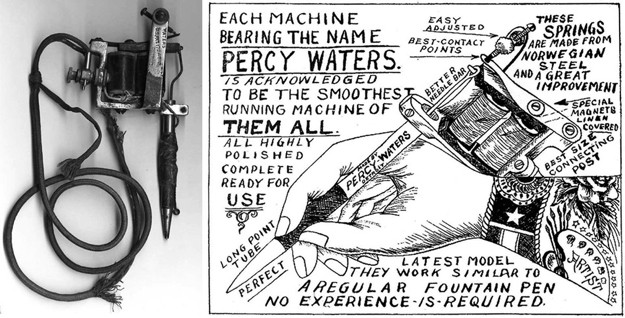
Tattooing really took off after 1870, when the first professional tattoo shops opened in the United States and Great Britain. In America, the earliest tattoo parlor is attributed to a German immigrant named Martin Hildebrandt, who opened his business in lower Manhattan. Hildebrant practiced the slow art of giving tattoos by hand, using a row of needles attached to a wooden-handle which was rapidly tapped upon the skin. At the time, tattooing was an artisan trade typically learned by working with a well-established tattooer. “It was a craft,†says Eldridge, “usually learned through an apprenticeship. It’s exactly the way a seamstress would hem your pant cuff with a needle and thread rather than a sewing machine. They learned to manipulate the needle into the skin and to create designs by hand.â€
In 1891, New York tattooist Samuel O’Reilly transformed Thomas Edison’s reciprocating pen used for engravings into an electric tattoo machine, and tattooing became a bona-fide industry. Though the tattoo machine has been improved, notably in the late ’20s by Percy Waters’ devices, which used alternating electromagnetic currents to propel the needle bar, the basic technology used to insert ink into skin remains virtually unchanged. As Eldridge says, “It’s like the wheel: They invented it and the damn thing’s still round. Of course, there have been refinements and the machine is more sophisticated, but the basic design principle is the same.â€